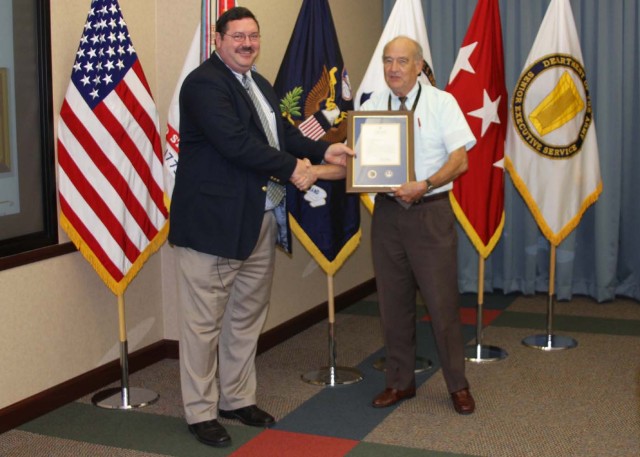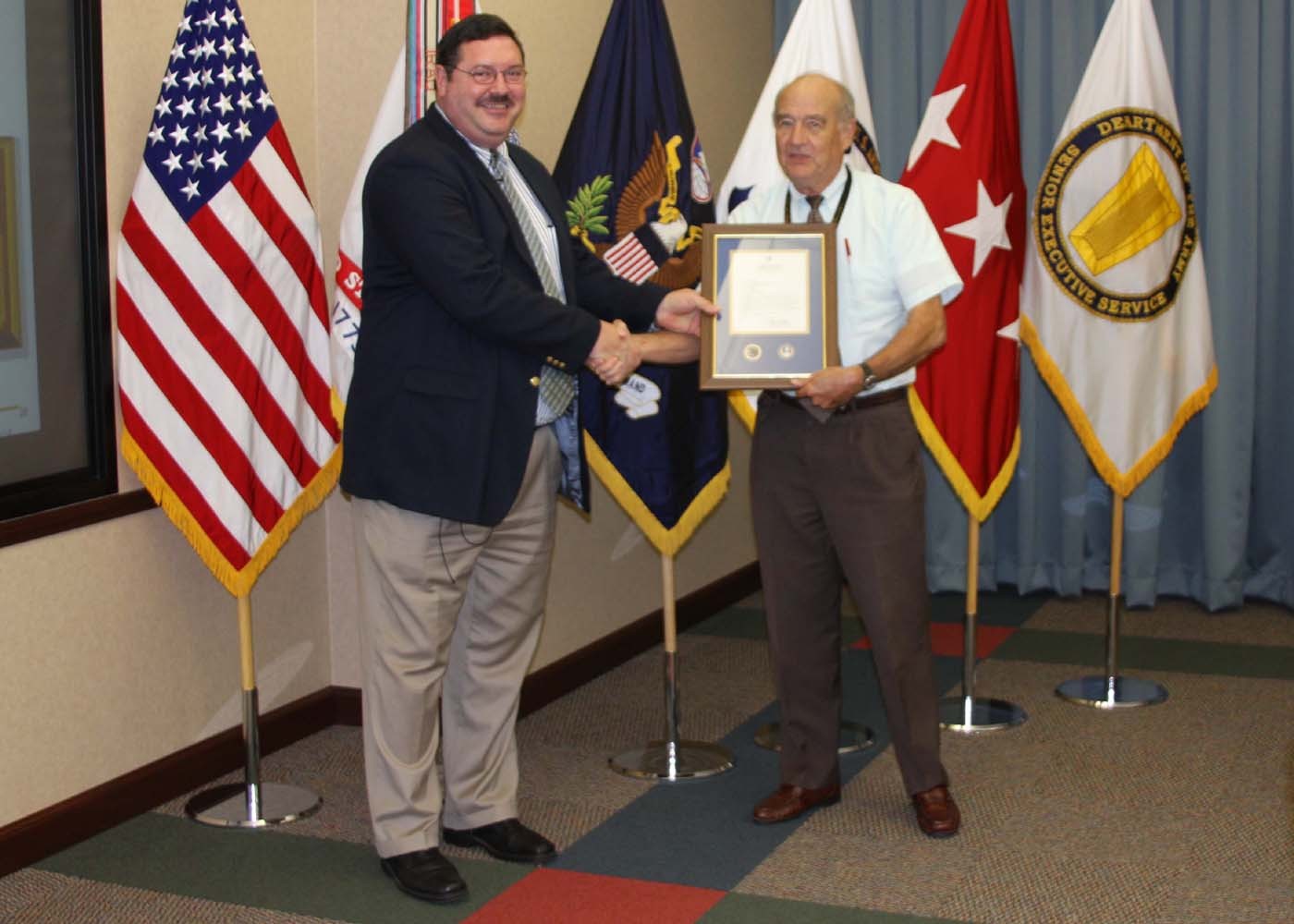REDSTONE ARSENAL, Ala. - A senior scientist with U.S. Army Space and Missile Defense Command/Army Forces Strategic Command, Technical Center, received a patent award for work in developing technology that uses polarization to discriminate debris and decoys from incoming ballistic missile reentry vehicles, as well as from ground and airborne targets.
Robert McMillan, who has a doctorate in physics, was presented with the patent award during a Technical Center town hall meeting Aug. 26.
"The idea of using polarization in target discrimination is similar to the way that polarized sunglasses work," McMillan said. "They cut the glare because they reject the horizontal polarization in sunlight, which is the one that is most strongly reflected. Once this glare is rejected, you are more readily able to see things."
McMillan's patent, "Coherent Radar and Ladar Polarimeter," follows along the same principle.
"If you can detect all of the polarization components that a target emits or reflects, you have a better chance of figuring out what that target is," he said. "Incoming ballistic missile reentry vehicles are often accompanied by debris and decoys, and that is what the enemy wants you to focus on instead of the real target.
"During reentry, we need to be able to discriminate targets from clutter and other junk. We think polarization has a possibility in helping with target discrimination."
McMillan's patented technology can be used with radar or in a passive sensor like a radiometer that measures temperatures remotely, he said.
Over the years, McMillan has had several patents granted. "I believe I had two patents while working at Westinghouse (now Northrop-Grumman) and two or three patents at Martin Company (now Lockheed-Martin)," he said. "Then there have been approximately four patents here during my time at USASMDC/ARSTRAT."
"The patent process required patience," McMillan said. "You start with an idea you think is patentable, and you write it up as best you can. It may take a week or two to write it up and submit the paperwork, but can take two to three years until the patent is granted."
McMillan graduated from Auburn University as a member of ROTC and with a degree in engineering physics. He spent two years in the Air Force as a communications officer, and spent time in Japan working on navigational aids for radar and instrument landing systems and tactical air navigation.
He went on to spend 22 years at Georgia Tech as a Principal Research Scientist specializing in millimeter-wave and optical sensors, with the last four of those years serving at the Air Force Research Lab in the Intergovernmental Personnel Act program.
McMillan has been at USASMDC/ARSTRAT for 11 years specializing in laser, radar and optical sensors.
deborah.erhart@smdc.army.mil


Social Sharing